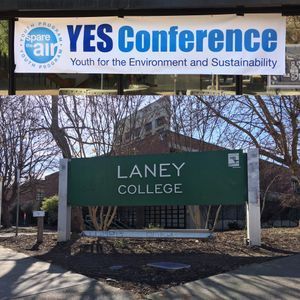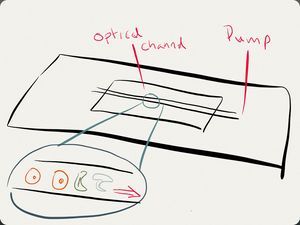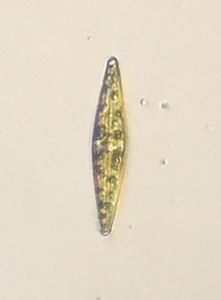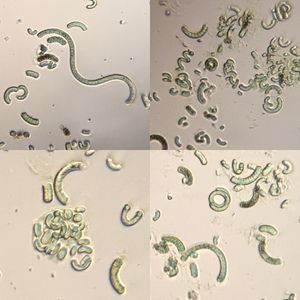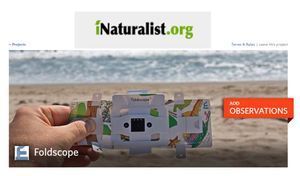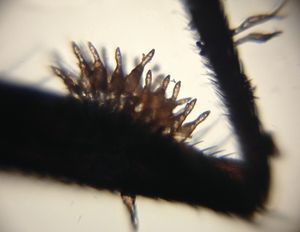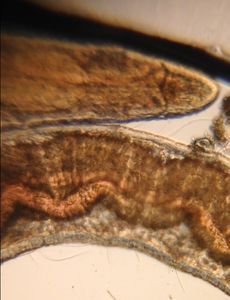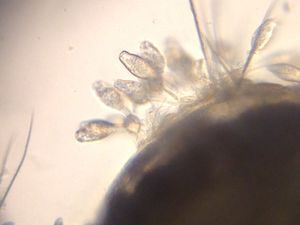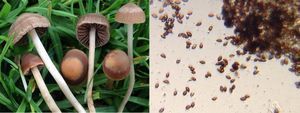Fun with Fungi 2
 May 14, 2016 • 5:27 PM UTC
May 14, 2016 • 5:27 PM UTC United States
United States 140x Magnification
140x Magnification Microorganisms
Microorganisms
damontighe
I currently work as a Curriculum and Training Specialist at Bio-Rad laboratories and help teachers incorporate more biotechnology into their classroom. I worked in DNA sequencing for years including the Human Genome Project and single cell genomics (termite, cow, and other guts). I have a love of the outdoors that I spread to the public via Calnature.org. I enjoy backpacking, picking mushrooms and photography.
15posts
17comments
9locations

Last night I went on a night hike with Calnature.org at Joaquin Miller Park in Oakland, California and armed with UV lights and dark forest we looked for all things that glow or at least are UV fluorescent. We found tons of two glowing arthropods; the Western Forest Scorpion ( Uroctonus mordax ) and the millipede Xystocheir dissecta.
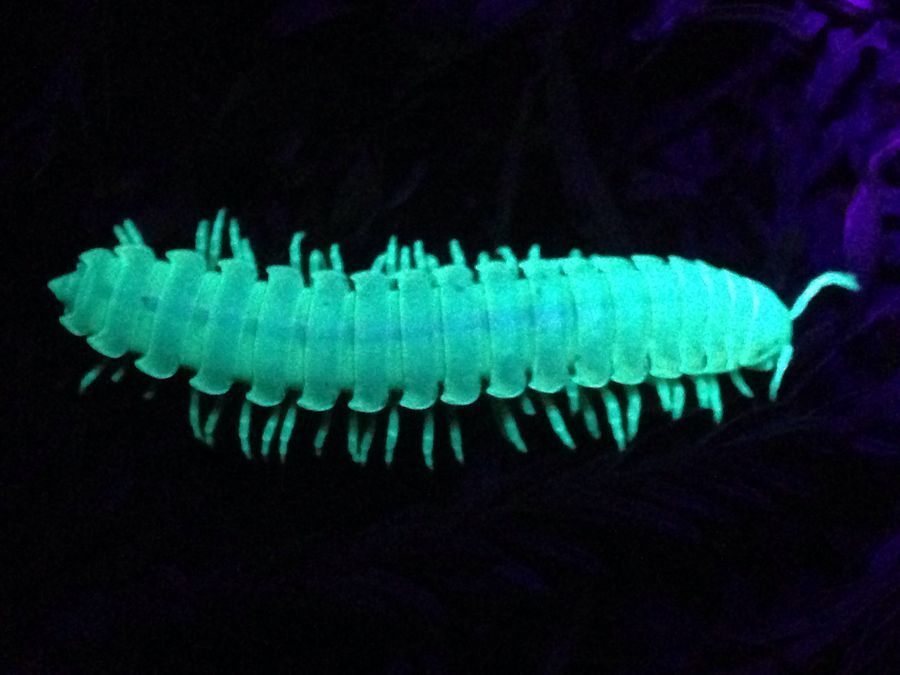
Xystocheir dissecta under UV light
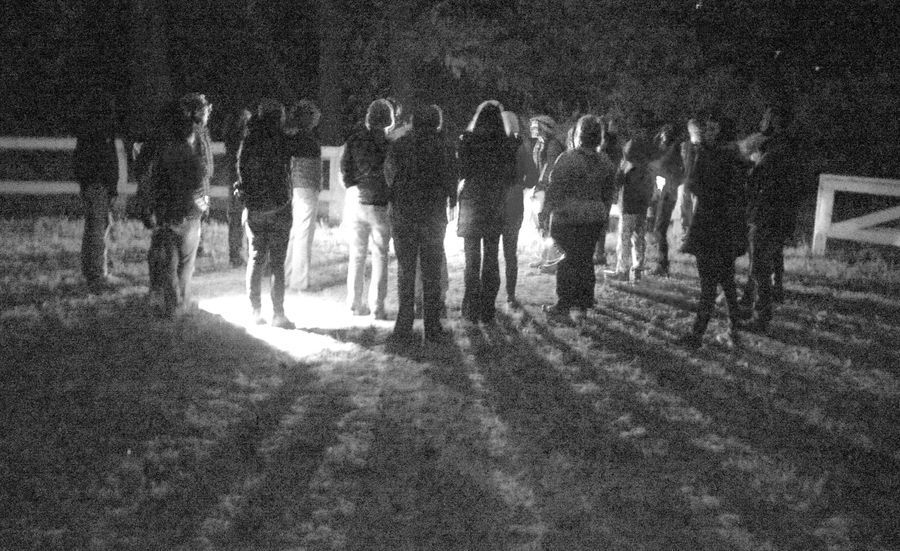
Night Hike Group
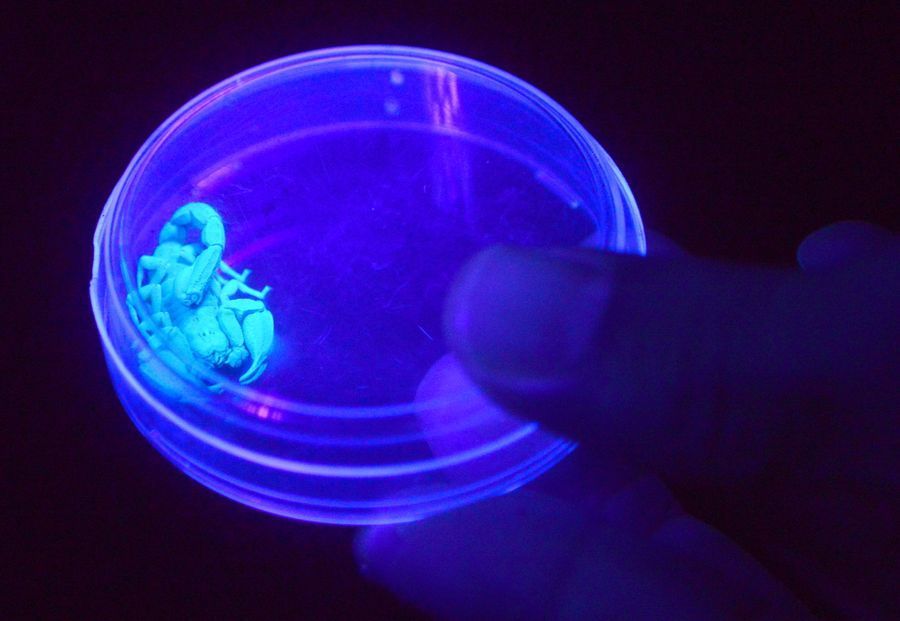
Western Forest Scorpion under UV light
One of the things we weren’t expecting to find that ended up needing the Foldscope to help with identification was a few UV Fluorescent Fungi. The most interesting of them was the below mushroom that is tiny (pileus is 4mm in diameter). The spores are approximately 5µm in length and a light rusty color. I have to admit the Foldscope does a much better job of giving me the spore color then my traditional inverted scope with a tungsten bulb. I posted this observation to iNaturalist and a Facebook on California Mushroom Identification and one of the better known local mycologist Christian Schwartz said this is the mushroom, Albogymnopilus nanus, which is currently a sort of place holder name since there are no papers describing this species. Samples of this are being dried down so that the ITS1 and LSU regions can be sequenced on it and maybe we can get a moleculary informed name for this species.
One of the things we weren’t expecting to find that ended up needing the Foldscope to help with identification was a few UV Fluorescent Fungi. The most interesting of them was the below mushroom that is tiny (pileus is 4mm in diameter). The spores are approximately 5µm in length and a light rusty color. I have to admit the Foldscope does a much better job of giving me the spore color then my traditional inverted scope with a tungsten bulb. I posted this observation to iNaturalist and a Facebook on California Mushroom Identification and one of the better known local mycologist Christian Schwartz said this is the mushroom, Albogymnopilus nanus, which is currently a sort of place holder name since there are no papers describing this species. Samples of this are being dried down so that the ITS1 and LSU regions can be sequenced on it and maybe we can get a moleculary informed name for this species.

How to find tiny UV fluorescent mushrooms: Get yourself a handheld UV light. Trust me this is a must have for anyone that is curious about the critters around you as it opens you up to a different channel of organisms or at least a different filter on the way your currently view the ones you are already familiar with. Amazon sells UV lights for a few dollars and you’ll find them easily under searches for “UV LED light” or “pet urine light.” Armed with your UV light, go out into a nice dark forest at night and shine your light at embankments or edges in the forest (logs, rocks, tree stumps, etc). If you see a bright spot in your lights path, go close and examine it. It helps to have a white light with you as well so you can switch over and get a look with your normal vision.
How to image spores with Foldscope: This sample was prepared by using a pipette to wash the gill structure of the mushrooms with approximately 20µm of tap water. I added the water to a glass slide and mounted a coverslip over it. A few minutes were given for the spores to settle to the surface of the slide and then place in the Foldscope. These images were taken with the Foldscope high magnification lens and I used light coming in through a window for illumination on the bottom image and a desk lamp for the top image.
Questions to think about: What causes UV Fluorescence in this mushroom? Does it serve a purpose? If so, what is that purpose? Some insects see in the UV spectrum, does this mushroom some how make itself more visible to a spore spreading insect by having this property?
How to image spores with Foldscope: This sample was prepared by using a pipette to wash the gill structure of the mushrooms with approximately 20µm of tap water. I added the water to a glass slide and mounted a coverslip over it. A few minutes were given for the spores to settle to the surface of the slide and then place in the Foldscope. These images were taken with the Foldscope high magnification lens and I used light coming in through a window for illumination on the bottom image and a desk lamp for the top image.
Questions to think about: What causes UV Fluorescence in this mushroom? Does it serve a purpose? If so, what is that purpose? Some insects see in the UV spectrum, does this mushroom some how make itself more visible to a spore spreading insect by having this property?
Sign in to commentNobody has commented yet... Share your thoughts with the author and start the discussion!
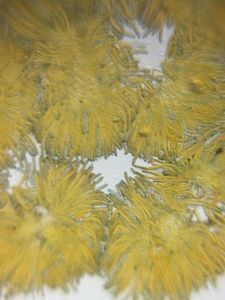
 0 Applause
0 Applause 0 Comments
0 Comments